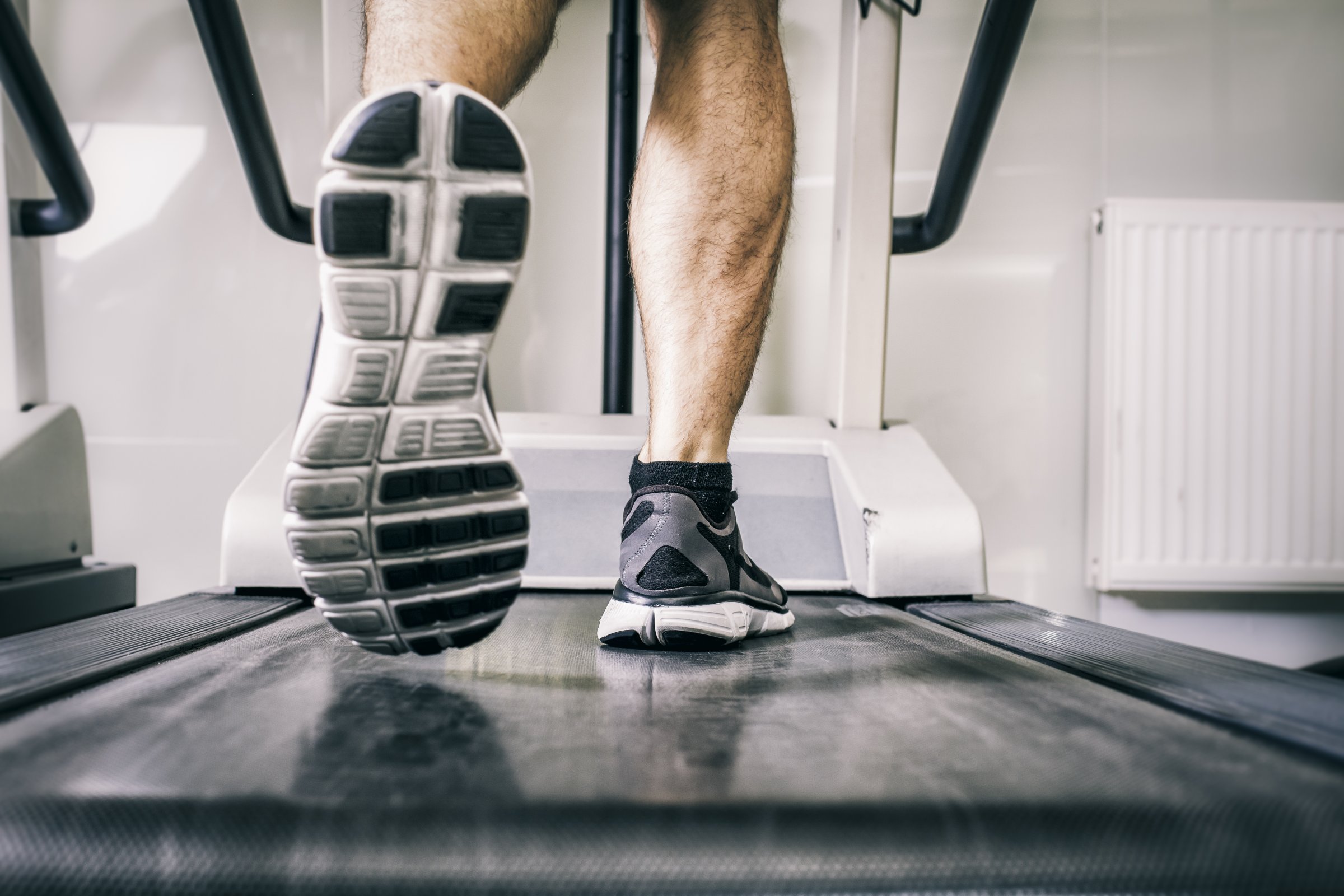
I don’t think it’s any secret that I despise the treadmill. If I had the choice between banging out a five-miler on that hamster wheel or slogging through a snowy Central Park, I’d definitely pick the latter. Personal preferences aside, the treadmill can actually be a pretty useful tool (there, I said it) if used correctly.
Read More: The Best Treadmills for Runners: The Features That’ll Help You Hit a New Personal Best
To help make my miles more manageable, and just get a better overall workout when I do find myself on the treadmill belt, I reached out to David Siik, a running coach and creator of Equinox’s treadmill training program Precision Running. I put his tips to the test, and actually enjoyed my last treadmill session. Read on the see if they help you tread right, too.
Plan ahead
Don’t just hop on and go. First of all, you’ll be incredibly bored and more likely to stop short of your goal. Instead, have a strategy—whether it’s speed intervals, incline intervals, or a combination of both. This will not only keep you engaged (and challenged!), but help you make real fitness strides, too. What’s more: You’ll probably end up logging even more miles in less time simply by varying your tempo.
HEALTH.COM: 10 Exercise Cheats That Blow Your Calorie Burn
Take your hands off the rails during inclines
You probably see people doing this all the time. Heck, you may even do it yourself, but Siik says it’s a big no no. “Holding on isn’t good for your back, and it’s not helping you get any stronger either,” he explains. Feel the need to grip for dear life? Chances are you’re going too fast for that particular incline. Siik’s suggestion: Slow your pace until you can climb without clinging on.
Step back from the display console
Running too close to the display causes you to shorten your stride and run with an unnatural posture, all of which means you aren’t running as efficiently as you could be. So inch back and give yourself some room. (Don’t worry, you probably won’t fall off the back of the treadmill, but you can always clip the emergency stop cord to your shirt for peace of mind.)
HEALTH.COM: Why Joining a Gym This Year May Be a Waste of Money
Stretch your arms and shoulders first
You may think your legs are doing all the work, but your upper body participates in your runs as well. “Your arms and shoulders play a crucial role in balancing forces created when running,” says Siik. They also help drive you forward, so make sure they’re warmed up and just as ready to work as your legs. Try this: Grab the ends of a towel with both hands, holding it taut behind your head. While maintaining tension in the towel, bend one arm, then the other, slowly moving the towel back and forth behind your neck.
Minimize arm swinging
Avoid swinging your arms across the center line of your body, advises Siik. The goal: “Keep them parallel to your legs to create a more stable running form and to work your core better.” Your hands should move up and down, not side to side.
HEALTH.COM: 25 Exercises You Can Do Anywhere
Relax your face and hands
Yes, running can be tough, but try not to show the strain on your face by scrunching it all up when you’re doing intervals. Keep things loose and remember to breathe. Also important: Relax your hands. This will reduce tension in the body, creating a more smooth and relaxed running form, which will allow you do to more and hurt less.
Say ‘no’ to smartphones
These days, we all seem to be tethered to our iPhones or Androids. But the treadmill and these techy gadgets just don’t mix. One misstep caused by trying to shoot off a quick text while cruising at a 7.0 could leave you sidelined. Plus, research shows that people who spent more time on their smartphones were less physically fit than their lower-use counterparts. Limit your phone use to a rockin’ playlist.
HEALTH.COM: 10 Exercises for Healthy Knees
This article originally appeared on Health.com.
Read next: Get Fitter (Much) Faster
More Must-Reads from TIME
- Cybersecurity Experts Are Sounding the Alarm on DOGE
- Meet the 2025 Women of the Year
- The Harsh Truth About Disability Inclusion
- Why Do More Young Adults Have Cancer?
- Colman Domingo Leads With Radical Love
- How to Get Better at Doing Things Alone
- Michelle Zauner Stares Down the Darkness
Contact us at letters@time.com